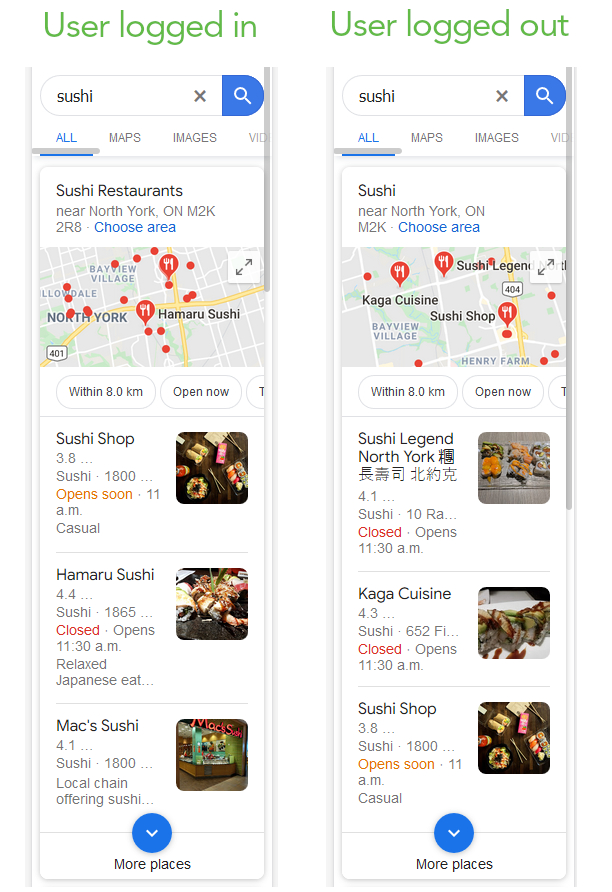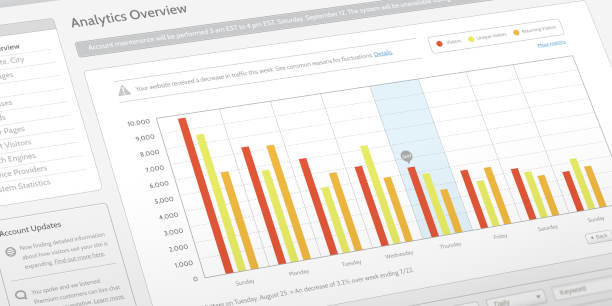As far back as 2015, 97% of consumers were searching for local businesses online, with 93% of those searches triggering Google’s local 3-pack. It was obvious that local search was an enormous part of all online search—and in 2020, it’s easy to argue that all search is effectively local. After all, even when a query is something seemingly geographically agnostic, like “coffee”, Google will still offer up a localised search experience.
As the search giant gets better at anticipating user needs, it has become more local than ever. Users need fewer clicks to reach the information they need. But what are the implications for businesses and online marketers? Let’s find out—starting with three fundamental truths in this new local-first world.
-
There is no standardised Google
Google the word “pizza” at the office, and then perform the same Google search when you get home. You’ll be presented with two totally different results. The local 3-pack will be populated with different businesses based on your geographical proximity. So far, so simple.
But extrapolate this customisation to other factors that Google puts into its user profiles. What if a user was in another country altogether? What if a user performed the search in a different language? What if a user looked for a specific brand, which may or may not have a location where they are searching?
Google’s result pages are informed by a huge variety of factors. Some are very obvious to users while others remain a mystery to all but the algorithm. Google gives different results to the user based on language, geography, relevant brands, and even the politics of their region. News sources can give varied account on events, and even searches for consumer goods may vary according to legalities and availabilities for a user’s location.

Google also tailors results based on users’ search histories (hence differences in the example above), installed apps, shopping habits, and more. Consider a search for “jaguar”. Google would use each individual user’s profile to determine whether to display results for jaguar the animal or Jaguar the car manufacturer. Again, while there’s no explicit local intent in the search itself, a user may also be shown a local 3-pack with either nearby animal exhibits or car dealerships as appropriate. There is no singular standardised Google—and even if there were, you can be sure that Google would include local businesses as part of their “ideal” user experience.
-
You can’t game the system
Google has gone to great lengths to customise and localise its search experience, including using factors that most users are not even aware of. Want to strip all of that personalisation away? Well, pour yourself a coffee, because you’re going to have to:
- Perform a completely informative search with no obvious local intent (e.g. “history of maritime trade vessels”)
- Not have your device logged into ANY of your accounts (Chrome, Gmail, social, shopping)
- Not have any apps running
- Have all geo-tracking turned off (which is always on by default)
- Have no search history, cookies, or any prior information stored on your device
- Use a third-party browser which does not attempt to determine your region
- Have your ISP not specify what region they are supplying your service to
- Use a proxy IP address
- Connect to other networks with a VPN
Following all of these steps is difficult, expensive, and will also likely land you on some form of government watch list. Even then, if you are still searching using Google, it will create a custom profile for you as you are searching. You will inevitably specify a language and a pattern of behaviour as you search, including your choice of spelling (“colour” vs “color”) and the kind of brands you look up. Even these meagre crumbs of information will lead to localised search results.
-
Declining website traffic isn’t necessarily bad
Google’s constant tinkering has proven that users demand immediacy, leading to search results that allow them to take instant action. After all, their intent is more likely to be about a store’s opening times rather than which brands will be on sale the following week. So businesses have to be ready to capture new and returning customers at a moment’s notice (using Google Posts, for example), connecting with them at that exact moment rather than holding out hope that they will conduct in-depth research.
But this trend gives rise to another, larger issue for businesses and marketers: users are increasingly able to complete their tasks directly on Google search results, so they no longer need to click through to websites. As a result, businesses are still acquiring customers via Google but the entire process is becoming more nebulous and difficult to track. A user that views business hours may not click that business’s Google My Business profile, but may still follow their search with a visit to the physical store.

Google’s ability to deliver the local information users need means that impressions go up while conversions go down, making it harder to track customer actions. Previously, high impressions with a low click-throughs was a sign your business was unappealing. Now it shows that Google is doing a very good job at showing the right information about your business. Of course, a percentage of all your impressions should still translate into clicks, but that percentage is set to shrink.
Businesses and marketers need to consider those that click on their business to be farther down the marketing funnel than before. In the past, users had to click through to your site to obtain even basic information; now Google is taking care of the fundamentals directly on the SERP. Users who click through are far more likely to have express intent to purchase or convert.
It’s a local world
Google’s broad push for local means the search giant now effectively is the topmost portion of the marketing funnel for many businesses. Accurate online business listings have become table stakes—and, after conducting local searches, users are now arriving at brand websites and physical stores more informed (and ready to buy) than they once were.
The vast majority of search has become local, whether businesses are prepared for it or not. The onus is on them to not only ensure that first impressions are exactly what customers expect, but to follow up with the right content to propel these interested customers to the next stage in their decision-making process. Drop the ball and your customers will simply navigate to the next competitor.
Local is our specialty. It always has been. Find out how we help enterprise brands—especially those with distributed local footprints—drive transformational growth online.




